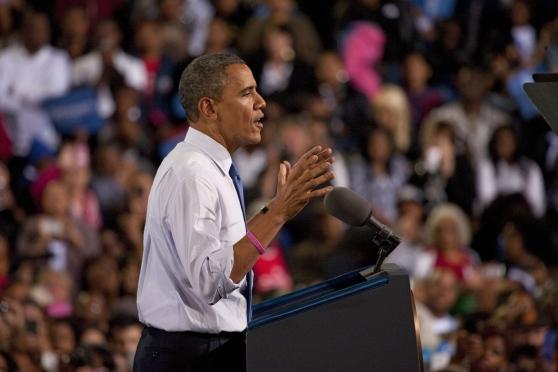
Former President Barack Obama is a gifted public speaker.
Forms of communication come and go, but public speaking has remained popular from ancient times through today. People tune into award shows primarily to watch the acceptance speeches. A speech can make or break a political candidate. The power of the human voice cannot be denied.
Educators know that speech is integral to fluency and one of the four components of language arts. Speaking is a crucial skill, particularly for English language learners and many students with disabilities. It’s no wonder many classroom assignments and projects revolve around speeches and public speaking.
When I was in high school, I had to memorize and deliver the Gettysburg Address. At the time it seemed like a form of torture, but now as a teacher, I understand the purpose. This single assignment gave me the opportunity to hone many skills. I had to read words repeatedly, which focused my attention on delivery, interpretation and vocabulary. I also integrated nonverbal communication such as pauses, eye contact and gesticulation to emphasize certain phrases. And of course, I learned about the topic of the speech and the historical context.
What I didn’t have in high school were the technology tools to help practice and perfect speeches, which would certainly have made the task less intimidating.
If you’re new to public speaking with students, see tips from Toastmasters International, an introduction to public speaking by the National Speech & Debate Association, or guidance from the Purdue Online Writing Lab.
A powerful way to introduce a new skill is through modeling. There are a plethora of exemplary speeches available online. The Internet Archive houses historical works, like Franklin Delano Roosevelt’s fireside chats, Martin Luther King Jr.’s famous speeches and John F. Kennedy’s inaugural address. Former President Barack Obama is considered one of the greatest modern speakers. His administration’s White House archives contain some of his best speeches. And while TED Talks contains tons of strong speeches, I particularly like its playlist of “Talks by brilliant kids and teens.”
Once students view several samples, discuss the elements of a successful speech. If possible, ask your students to craft this criteria.
Writing an effective speech is another skill to learn. A speaker is usually assigned an allotted time to speak (for example, three minutes), and novices may not be sure how much to prepare. The Debatrix speech calculator gauges a speech’s length, duration and speaking rate from lines of text. Baruch College’s Tools for Clear Speech explains how to modify one’s speaking rate, with examples of speech at varying paces.
Recording and listening to their speech enables students to more easily spot areas for improvement, such as talking too fast or not enunciating clearly. You can record speeches with native apps on smartphones, iPads or laptops. The voice typing tool in Google Docs can help indicate whether a person’s spoken words can be clearly understood.
Now you and your students are ready to talk the talk. “Four score and seven years ago…”